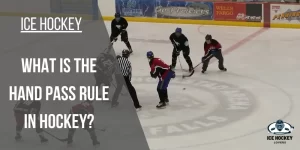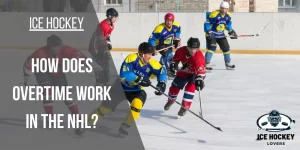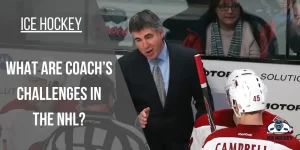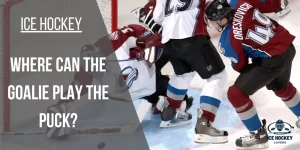What is a Penalty Shot in Hockey? Why Does it Happen?

Penalty shot – a one-on-one fight!
One player vs a goalie. When you hear the crazy sounds of fans, get ready – it’s time to see a penalty shot. The penalty shot is one of the most exciting things in ice hockey and makes fans go insane. It is a great opportunity or a blessing for a team to get a penalty shot, but at the same time, it puts pressure on both teams.
Table of Contents
What is a Penalty Shot?
A penalty shot is when a player takes a free shot onto the opposing team’s net and goes unimpeded. Only the opponent’s goalie stands there on alert to stop the puck. It can happen during regulation and overtime awarded due to some penalties.
While playing a penalty shot, the combination of will, skill and enough power to push the puck straight into the opposite team’s net must be applied just in a few seconds because, on the net end, the goaltender has prepared all of himself to make one step to stop the puck, and your efforts will go down the drain.
Penalty and Shootout – Difference
Apparently, both penalty and shootout are the same, as in both situations, a player with a puck goes in from the center of the ice without facing any opposing player and does his best to score a goal.
So, what’s the difference between them? – They have different functions.
Penalty Shot:
A penalty shot may occur in both regulation and overtime. It is given when there is a penalty done by other teams – an illegal interference to steal a goal-scoring chance. If the goal is scored, it will be counted on the scoreboard.
Shootout:
Even after the regulation and overtime, if the game remains undecided, the teams will get engaged in the extra five minutes of the game, which is called a shootout. During a shootout, three players from each go onto the ice arena and rotate their turn to push the puck against the opposing goalie. It’s a battle between 3 designated players and a one-goaltender. The team with the highest accumulative total goal scores will be the winner. A ‘sudden death’ shot will be taken if there is still no result after three shootouts.
Shootouts are the most exciting part of the game, and they make fans stand up from their seats but are sometimes a controversial way to finish the game.
Times When Penalty Shot Awarded
- While a player is on a breakaway, an opposing team’s player leaves his bench to halt that player.
- If things like gloves and sticks are tossed on a breakaway player by a spectator or a player.
- When a player in the defensive zone lays his hands on the puck or picks it up while the puck is inside the goalie crease.
- The deliberate dislodging of the net by a player or a goalie when the player is on a breakaway or in case there is not much time left in penalty serve during regulation and overtime periods.
- Being on a breakaway, a player is fouled or cheated from behind.
- If a player throws a stick or gloves on a player standing in the defensive zone, and makes him lose his scoring chance.
Penalty Shot – Who Shot It?
Generally, a penalty shot is given to the player who had the puck and got hampered by the team on a penalty. However, it has an exception in case of illegal grabbing of the puck on the goal crease or if officials are confused in determining who the offended player was. So, at that time team coach can send a designated player of his own choice.
Penalty Shot Procedure:
- First, the player who will do the penalty shot will be announced.
- The referee places the puck on the ice center. Then blow a whistle to indicate the player to skate in and take the goalie.
- At all times, the puck should be held in the forward direction of the net. Once the shot leaves for a goal and the goalie stops it, the play will end.
- It is not permitted for players to rebound their scores, just like in soccer games.
Things Not Allowed In Penalty Shot
There are rules while taking on a penalty shot that you must abide by, as it can not be played just like you want.
- No rebound shots from the goalie.
- A 360-degree spin that a player does is not permitted.
- While going towards the ice center where the puck is, a player cannot slow down or stop and then move on.
- After a penalty shot, the face-off will take place as the play will not continue.
- The shot that goes past the goalpost will end the penalty shot.
Statistics of Penalty Shot
Penalty shot attempts are primarily successful in scoring. Penalty shots yield a levelled competition to the power play on account of scoring percentage as per the sports.stackexchange.com. For instance, in 2006, power play had a 19% scoring percentage, and penalty shots had 28%.
After Penalty Shot, Where does the Face-Off Takes Place?
Face-offs take place based on two situations:
- If a goal is scored on a penalty shot, then a face-off will occur at the ice center.
- If the penalty shot is missed, a face-off will occur in the face-off circle of the goalie zone who saved the penalty.
Penalty Shot Percentage
The average percentage of successful penalty shots (that score a goal) is 33.00%.
The list of the NHL’s last 15 seasons is shown below, with the number of penalty shot attempts, their score, and their success rate.
| Seasons | Attempt | Goal Scored | Percentage |
| 2022-23 | 4 | 2 | 50.00% |
| 2021-22 | 34 | 8 | 23.55% |
| 2020-21 | 27 | 9 | 33.33% |
| 2019-20 | 46 | 11 | 23.99% |
| 2018-19 | 43 | 15 | 34.88% |
| 2017-18 | 49 | 19 | 38.78% |
| 2016-17 | 44 | 14 | 31.82% |
| 2015-16 | 55 | 17 | 30.91% |
| 2014-15 | 37 | 14 | 37.84% |
| 2013-14 | 69 | 21 | 30.43% |
| 2012-13 | 34 | 08 | 23.43% |
| 2011-12 | 69 | 27 | 39.13% |
| 2010-11 | 77 | 27 | 35.06% |
| 2009-10 | 54 | 16 | 29.63% |
| 2008-09 | 59 | 23 | 39.00% |
| Total | 701 | 231 | 33.00% |
Frequently Asked Questions
Who allows a penalty shot during a game?
In the NHL, referees allow and signal for a penalty shot to a player who has a clear goal chance but gets impeded by the opposing player. This penalty shot is like a breakaway scoring chance that can turn the game situation.
Does a player plus-minus (+/-) get improved by a penalty shot goal?
If a team scores a goal when the other team is playing with one less player, that goal does not help improve a player’s plus-minus stat.
Are penalty shots counted as goals in NHL?
Yes, these shots count as goals in the final score and the player’s overall stats. But the shootout goals neither count in the final score nor in the player’s overall stat.
Is there a switching of goalie in a penalty shot?
Yes, it is allowed. A team can change its goaltender, but this is not a good choice as the goaltender on the bench has a temperature change as he will be in the ice arena, and it will be hard to stand against the shooter’s decisive oppressive action in time. Also, the goalie who comes into the bench must stay there until the next play stoppage.
Conclusion
Penalty shots bring a twist to the game as it is the most thrilling part and a chance for the team who takes a penalty shot to change the game’s momentum and get the leading line. However, they are not always successful. It’s a time that creates an intense situation for both teams. It is a one-on-one event that draws fans’ attention and makes them sit on the edges. It’s a stroke of luck, and no one can predict who will win.
Related Posts:

Who is Austin Taylor?
Meet Austin Taylor, your go-to source for everything ice hockey! With a passion for the sport that’s as deep as the ice itself, Austin Taylor brings you concise, expert insights and nitty-gritty details on all things hockey. From gear reviews to strategy breakdowns, Austin Taylor is your trusted guide to navigating the exhilarating world of ice hockey. Get ready to lace up your skates and dive into the game with Austin Taylor as your ultimate companion.





